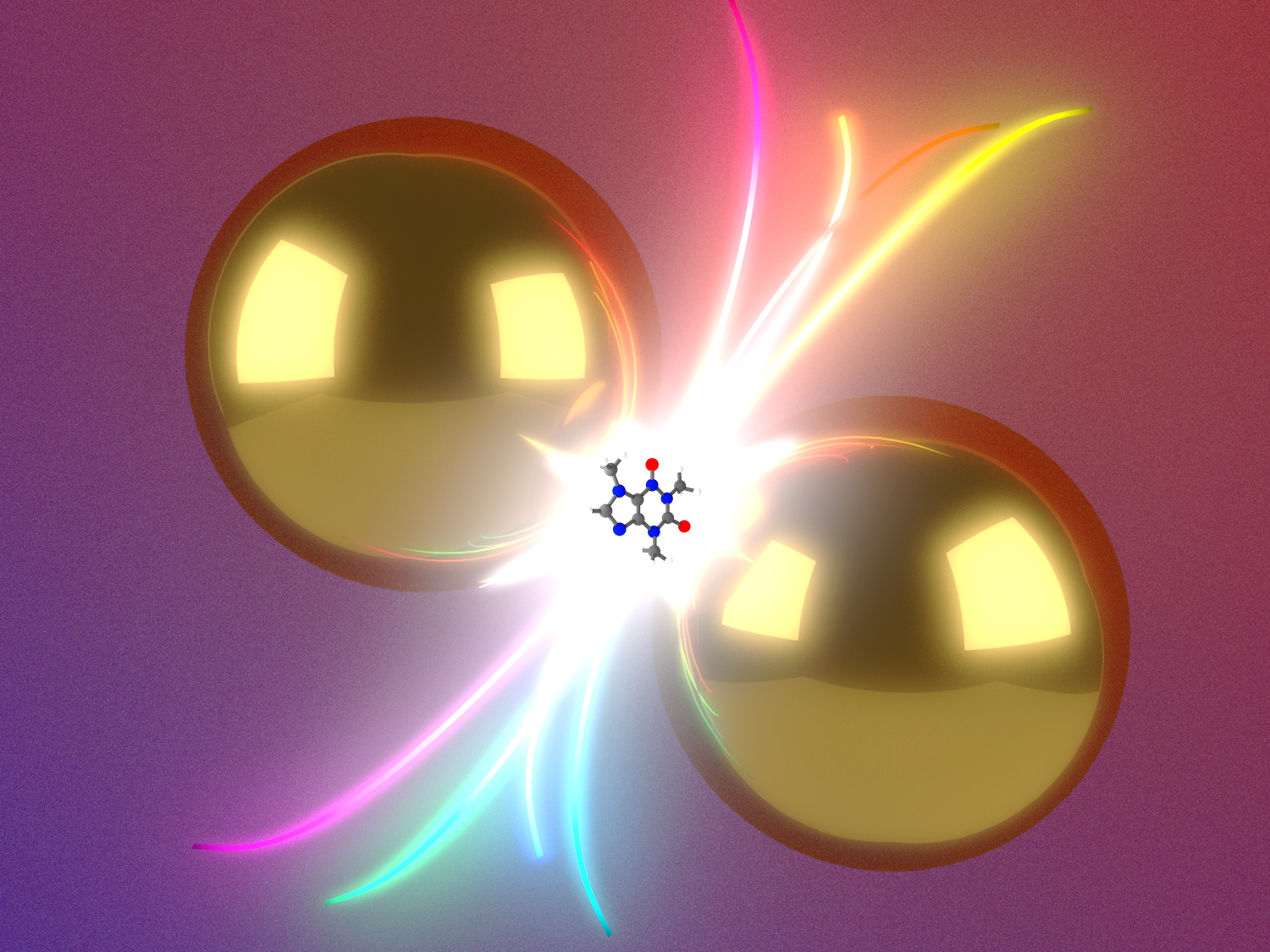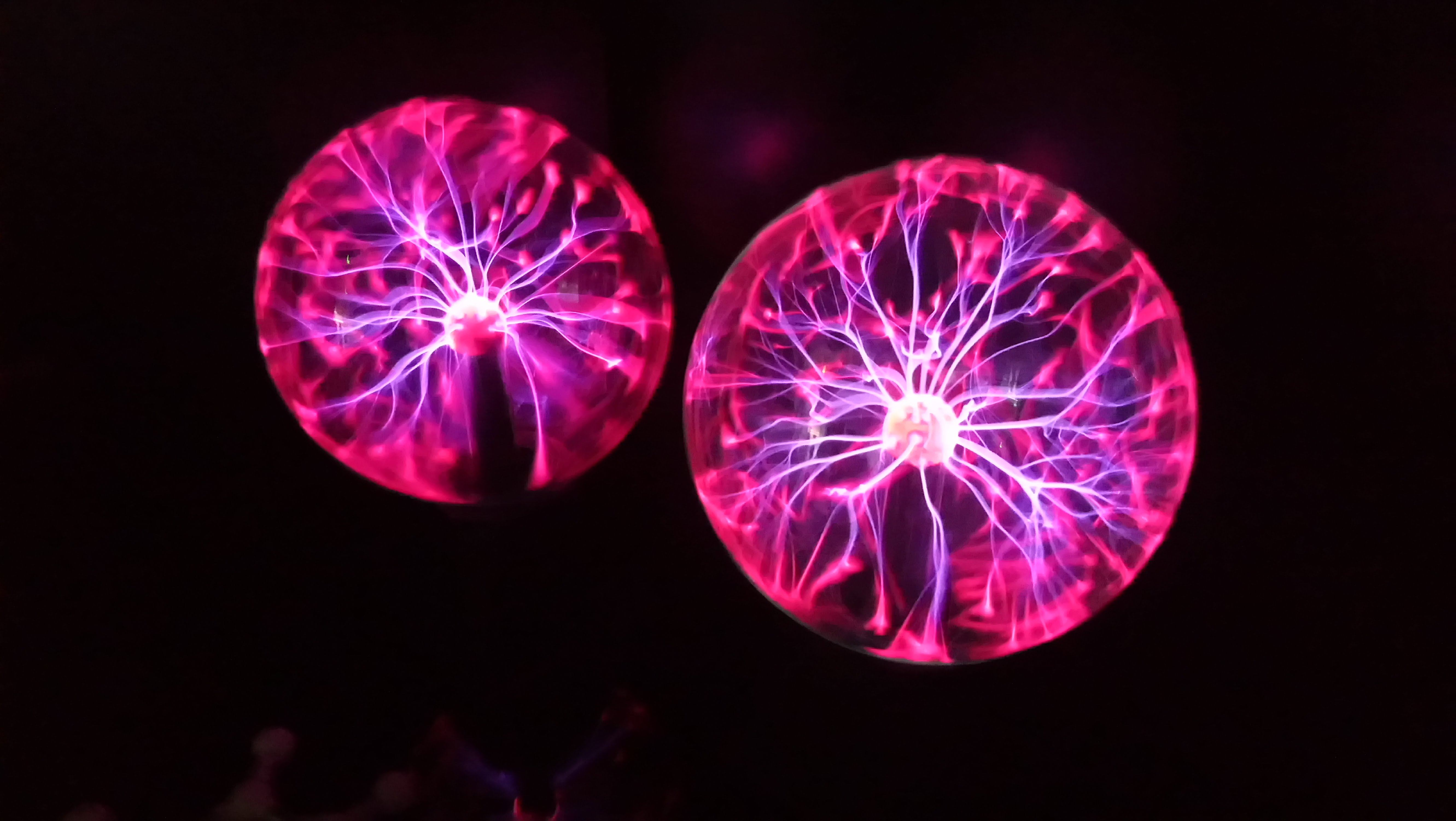
The nanoscale is incredibly important. It’s the scale of molecules and cellular machines that drive all biological processes and human life. Ranging from 1 to 100 nanometres, that’s about 100,000 times smaller than the thickness of your hair, yet 1000 times bigger than a single atom! In fact, it’s so small that it’s incredibly difficult to see. We can’t use microscopes because the wavelength of light is about 100 times bigger than the nanoscale. But we now use a clever trick to squeeze light inside a nano-gap by harnessing a special light-matter interaction called plasmons.
Plasmons are collective oscillations of electrons caused by shining light onto metal surfaces. The oscillating electromagnetic field of light pushes and pulls on the electrons inside conductive materials like gold. These oscillating electrons create very intense local light fields. By shining light on two gold nanoparticles separated by a single nanometre, we strongly confine the optical field to the nanoscale between the nanoparticles. This extremely intense light in the nano-gap vigorously shakes the bonds of molecules in the vicinity causing them to emit different colours. This allows us to see the molecules inside the nano-gap.

Our plasmonic gap demonstration with plasma balls shows how plasmons are used to sense molecules. The plasma balls acts like the plasmons on gold nanoparticles and creates an intense localelectric field. These fields interact with the electrons in nearby objects like us. We can hear this by connecting ourselves to speakers and bringing our hands near the plasma balls. The closer we get, the stronger the interaction and the louder the sound. We also demonstrate the sensing of molecules with molecular models containing embedded neon light bulbs. When we bring the molecules close to the plasma balls, the local electric field interacts with the neon bulbs and causes them to glow. While they all look similar when observed under normal light, they light up in all the different colours when they couple to the plasma balls. This process is called capacitive coupling and it is the same process we use to sense molecules inside plasmonic nano-gaps. Try it yourself!
Articles on this Subject:
Research Horizons- http://www.cam.ac.uk/people/jeremy-baumberg
Technical Notes:
1) See our research pages at https://www.np.phy.cam.ac.uk/research-themes/plasmon-chemistry-sensing
2) Our work has featured recently in the journals Nature and Science, see press releases at
- http://www.cam.ac.uk/research/news/nano-hall-of-mirrors-causes-molecules-to-mix-with-light
- https://www.cam.ac.uk/research/news/worlds-smallest-magnifying-glass-makes-it-possible-to-see-individual-chemical-bonds-between-atoms
- https://www.cam.ac.uk/research/news/little-ants-researchers-build-the-worlds-tiniest-engine
3) A few recent papers related to this work
- exploring how to measure contaminants in whisky: DOI: 10.1039/C7FD00147A
- confining light to the scale of atoms: DOI: 10.1126/science.aah5243
- using DNA to build nanogaps for molecules: DOI: 10.1021/acs.nanolett.7b04283
see more at https://www.np.phy.cam.ac.uk/publications
Groups working in this field:

NanoPhotonics,
Melville Laboratory for Polymers,
Nano-Optics to Nano-Chemistry (NOtCH) programme, Roll-to-roll for Photonics (R2R4P),
NanoPhotonics explores how new materials can be created, in which the interaction between light and matter is fundamentally altered to produce fascinating and useful new effects. Our world-class NanoPhotonics Centre at the University of Cambridge is led by Prof Jeremy J Baumberg (FRS), with collaborators spread widely across the University and across the world. It supports interdisciplinary teams bridging physics, nanoscience, chemistry, materials science, biotechnology, clinicians, and engineering. We combine soft and photonic materials in unusual ways, making flexible and stretchable nano-materials with new properties for both functional and bio-applications.


